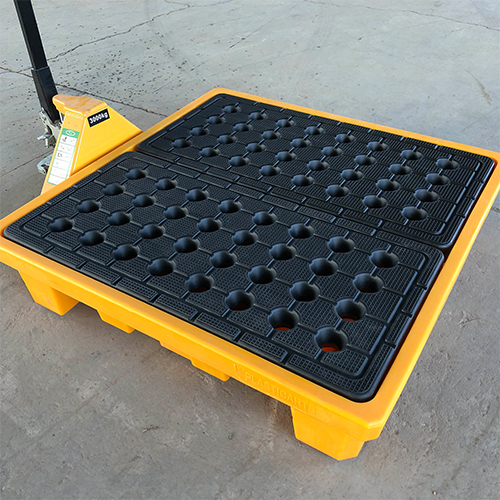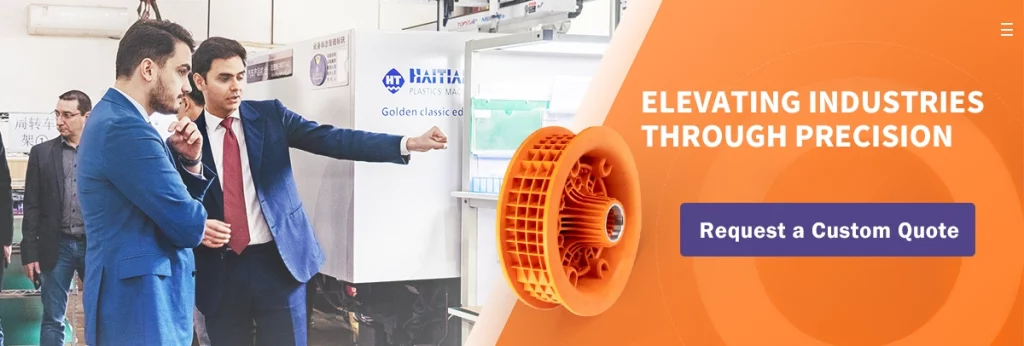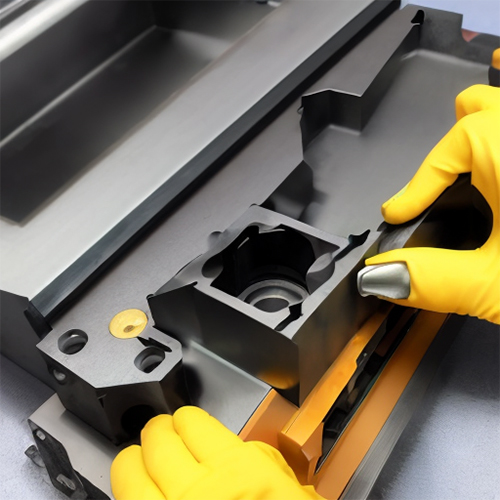
Aluminum Injection Molds In Product Manufacturing - Prototool - aluminum molds f
Author:gly Date: 2024-10-15
People inject two separate materials into the same mold to create the product in two-shot injection molding. These substances are administered sequentially rather than simultaneously. The product is not discharged from the mold between the two shoots but is produced in a single step.
Utilizing two-shot molding, you may produce medical equipment such as bone saws. Rubber grips have a crucial role in how well this equipment works. Compared to conventionally constructed things, two-shot molded objects improve cleanliness since there are fewer fissures where sub-parts contact.
Because two-shot injection molding does not require several production stages, it gives designers more freedom. It offers molding manufacturers a number of benefits, including reduced manufacturing costs, improved ergonomics and aesthetics, superior mechanical bonding, and quicker production times. This process can produce a wide range of goods, including toys, vehicle components, medical equipment, containers, and toiletries.
Following the first stage, the mold opens, allowing the platen holding the finished product to rotate 180 degrees on a horizontal axis and line up with the sprue of the following stage. The first cavity is isolated from any injection in this stage. The second shot now starts molding the remaining portion of the product since the sprue of the second material is now in line with the runner for the second cavity.

With two-shot molding, items like toothbrushes may be accurately shaped. It can combine a rigid base plastic with a softer rubber second shot for improved grip and coloring.
Twin sheet forming is a complex method of polypropylene plastic manufacturing, requiring high levels of precision and care. It involves heating two plastic sheets at the same time, then fitting them together and fusing them. Because the plastic must be matched with pressed points where the fusion occurs, there’s no room for error or the integrity of the product is weakened. Twin sheet forming is ideal for manufacturing double-walled and hollow products, like air ducts, chutes used in material handling, and bed liners.
As with regular injection molding, the procedure begins with mold sealing to create the first cavity. In this initial configuration, the secondary step’s runner is sealed off while the runner for the first cavity is aligned with the base material’s sprue. The first substance is then injected into the opening, filling it.
Double-shot injection molding offers exact production compared to conventional molding and assembly or even more contemporary techniques like insert molding. There is no possibility of material misalignment because the semi-finished product does not need to be withdrawn from the mold between phases. The finished product can be just as precise as the mold if thermal impacts are appropriately managed through effective product design.
Polypropylene injection molding is a method of manufacturing in which polypropylene is melted to its liquid state, then injected into a double-sided mold. Injection molding is ideal for small components and parts or plastic pieces that require intricate detailing and varying thickness throughout the item. While the up-front cost is more expensive and has a longer lead time than thermoforming, for high volume orders or orders that will be fulfilled regularly, the per-unit cost is actually very cost efficient.
Due to plastic’s advantageous characteristics in a water environment, two-shot injection molding works well in this situation. Softer seal surfaces can be coupled with durable foundation sections.
The designer can combine the most outstanding qualities of many injection molding materials via two-shot injection molding. Engineering plastics may have a wide range of beneficial yet quite distinctive qualities. To precisely accomplish the necessary outcomes, the designer can blend the solid structural qualities of hard plastic with the supple and attractive attributes of another material.
As the name implies, two injection shots are used in this method instead of simply one, as in traditional injection molding. This procedure makes use of a unique mold that meets the needs of these two injections. The mold and the systems that support it are made to produce two shots without requiring the removal of the half-finished product between them.
Polypropylene is a thermoplastic polymer that is one of the most widely used plastics worldwide, second only to polyethylene. It was created in 1951 by petroleum chemists and was quickly used in large-scale commercial production.
In addition to its versatility, it’s also one of the lowest cost plastics, making it a popular option for mass producing plastics across the automotive, furniture, and material handling industries.
We are proud to be a leader in polypropylene plastics manufacturing, capable of providing custom plastics to customers across numerous industries. Our clients know we offer the durable, long-lasting products they need while providing competitive pricing and fast lead times. We work with businesses in North Carolina, South Carolina, Pennsylvania, Maryland, Tennessee, Georgia, and Virginia.
Often used as a less expensive alternative to polypropylene injection molding, pressure forming plastics allows us to achieve higher levels of detail and sharp edges than with vacuum forming. Once the polypropylene is fitted around the tool, the plastic is blasted at high pressure with air, pushing it against the tool and creating the sought after design and detail. Because it’s low electrical conductivity, polypropylene pressure forming is used for manufacturing scientific instruments and medical equipment.
Two-shot injection molding is a procedure that is ideal for producing goods that are ergonomically designed. It is simple to cover or add to structural plastic with materials that are more suitable for human contact. Because it offers a more excellent grip and a gentler touch, soft, rubbery material is more suited for human hands.
The chemistry of the materials must be taken into consideration while choosing ones for double shot injection molding. Some materials may establish a compelling molecular connection even when they may not all link correctly. The table below shows compatibility with adhesion.
Budgets for designing and developing new products may be constrained during a period of constrained resources and cost-cutting. In certain businesses, the tools and expertise required to effectively finish an LSR molding operation are also scarce. As a top supplier of LSR 2-Shot injection molding services, Prototool can assist you in effectively, affordably, and promptly finishing such tasks. For more information on how Prototool can assist you with your LSR 2-Shot injection molding needs, get in touch with us right now.
Vacuum forming is the simplest method of polypropylene thermoforming. Once the plastic is heated and fitted around the custom tool, a high-powered vacuum removes air and draws the plastic more tightly against the tool. This method is best for plastic components that don’t require sharp edges, defined corners, or intricate details, such as car dashboards and shipping trays.
Since 1988, Advanced Plastiform, Inc., has been providing superior custom plastic molding and fabrication services to companies in North Carolina, South Carolina, Maryland, Georgia and Pennsylvania. Contact us to make an appointment Mon-Fri 8-5.
Before starting a two-shot injection molding process where adhesion combinations are unknown, an adhesion test must be performed. Undercuts, shoulders, or grooves may be added to the design to lock the two components together when the intrinsic bonding capacity is insufficient.
Two-shot injection molded products have excellent mechanical characteristics. Given the excellent material selection, the product’s various levels combine molecularly throughout the molding process. This bond is frequently more durable than traditional molding and assembly and even more durable than other cutting-edge techniques like over- and insert molding.
At Advanced Plastiform, Inc. we design and manufacture custom plastics for industries and businesses across the Southeast and Mid-Atlantic. In order to ensure that we are producing highly-durable plastics that can fulfill the needs of our customers, we work with numerous thermoplastic materials to provide the best result. Due to its versatility and multitude of uses, we are a leading polypropylene plastic manufacturer.
Elevate your projects with consistency, quality, precision, and efficiency in custom plastic manufacturing with parts made from polypropylene.
Two-shot molding may be used to make plastic electrical items with built-in LEDs efficiently. A transparent insert can be sculpted into the design to distribute or color the LED light.
With this method, you may produce plastic storage containers. Along with rubberized edges to secure lids and soft container surfaces to safeguard contents, other colors can be incorporated.

Two-shot injection molding excels in this situation. Thanks to two-shot molding, A production line can now produce more complicated goods with fewer stages than ever. Think about the standard injection molding procedure: Two distinct materials would have needed to be molded separately in two different molds, followed by a manual assembly phase, if a certain object was made of those materials. In two-shot injection molding, these two components are fused and formed in a single mold configuration, eliminating the need for any assembly.
Since its inception, the plastic injection molding market has advanced significantly. It has advanced significantly in terms of productivity, cost-effectiveness, and new and creative approaches to product manufacturing. Two-shot injection molding is one of these creative methods. Multi-material injection molding, two-color injection molding, two-k injection molding, or double-shot injection molding are other names for this procedure.
Products created using a two-shot method can maintain the necessary structural characteristics while still having a very appealing appearance. The load-bearing structural component can be molded in the first phase of this procedure, and the finishing touches can be applied in the second step using a more attractive material.
The reduction in manufacturing time is a crucial advantage of two-shot injection molding. There is frequently no need to do secondary assembly of the item since it can add many product tiers during this operation. With the advent of mixed molding, traditional injection molding would have required a whole secondary stage in manufacturing.
It’s not much of an exaggeration to say polypropylene is used for everything. It’s easy to customize, has a high melting point, high flexibility, and is water resistant so it’s most commonly used for:

In 2-shot molding, several tool sets are employed to create the molds. The tools in a rotating platen configuration have the same cores but different cavities. The runners must be built such that they may be turned off during the inactive molding processes.
Nave ISK-8, Parque Industrial y Logístico Sky Plus, Avenida Mineral de Cinco Señores No.100, del Parque Industrial Santa Fe, Silao de la Victoria, Guanajuato, México
Never once during this procedure is the product taken out of the mold or moved about in the mold. With the exception of any post-process defects brought on by factors like uneven cooling, the finished product is therefore made with the same precision as the mold itself.
Polypropylene thermoforming is a lower-cost, efficient way to manufacture large plastic goods and components. We heat the polypropylene until it is malleable, then fit it around a custom tool and finish the product using one of three methods:
GETTING A QUOTE WITH LK-MOULD IS FREE AND SIMPLE.
FIND MORE OF OUR SERVICES:


Plastic Molding

Rapid Prototyping

Pressure Die Casting

Parts Assembly



